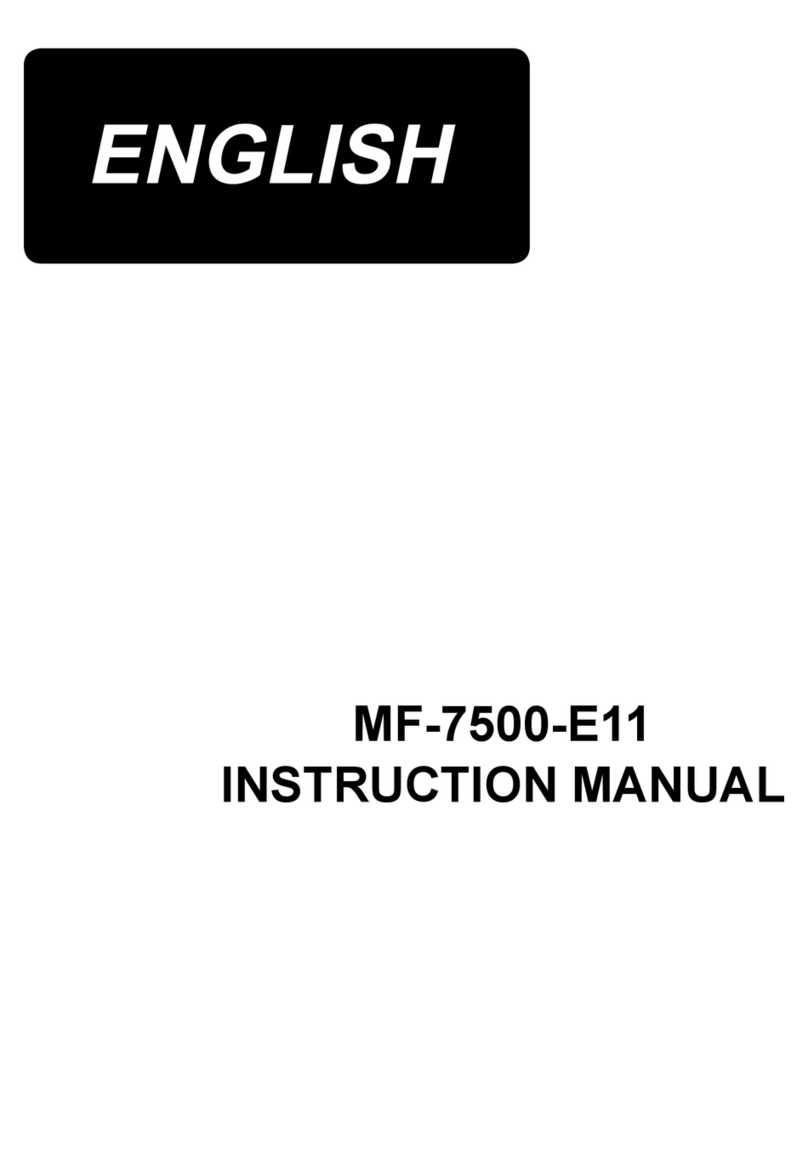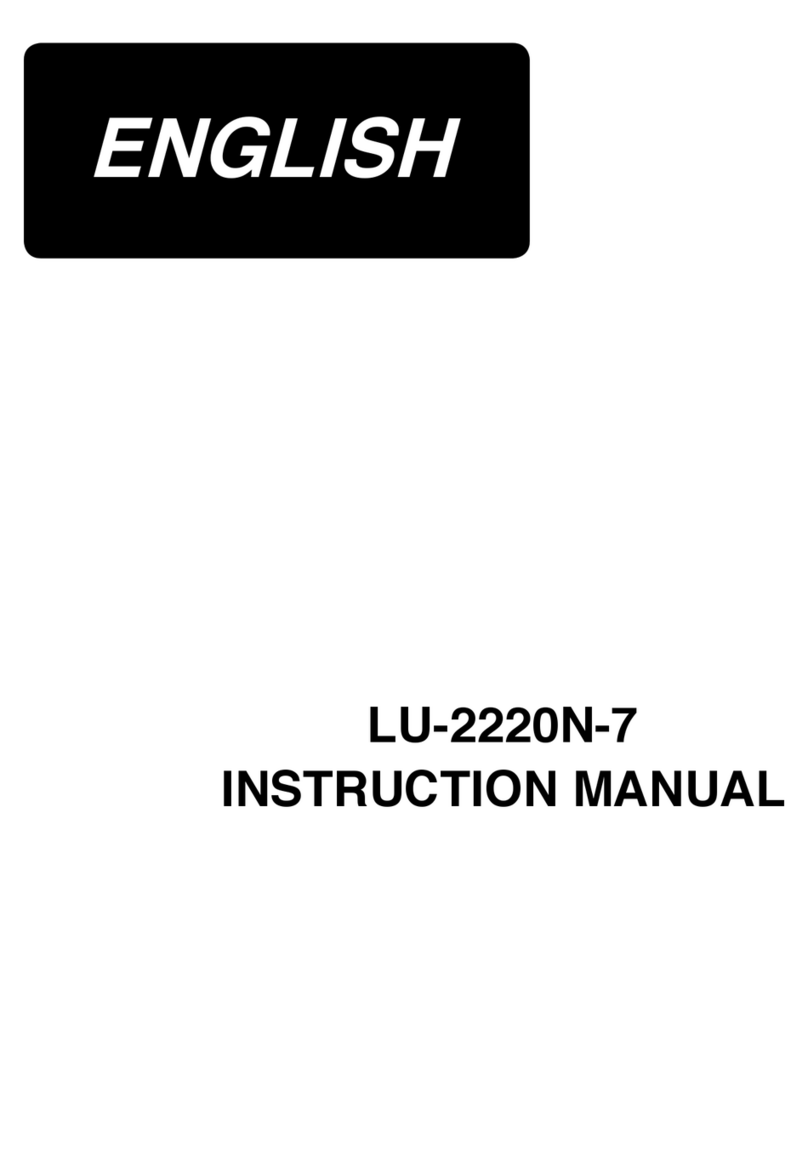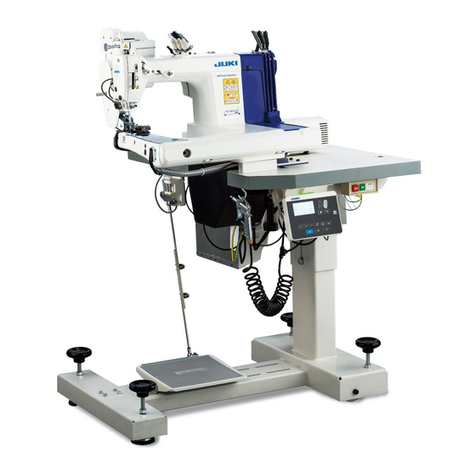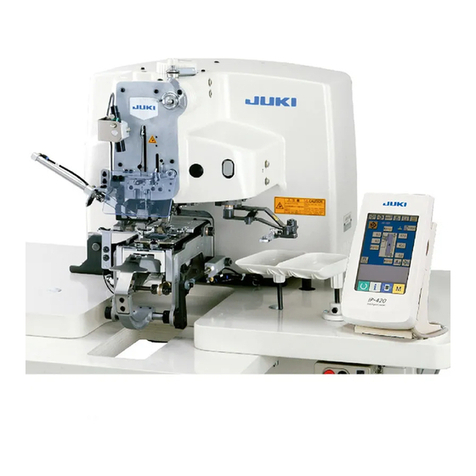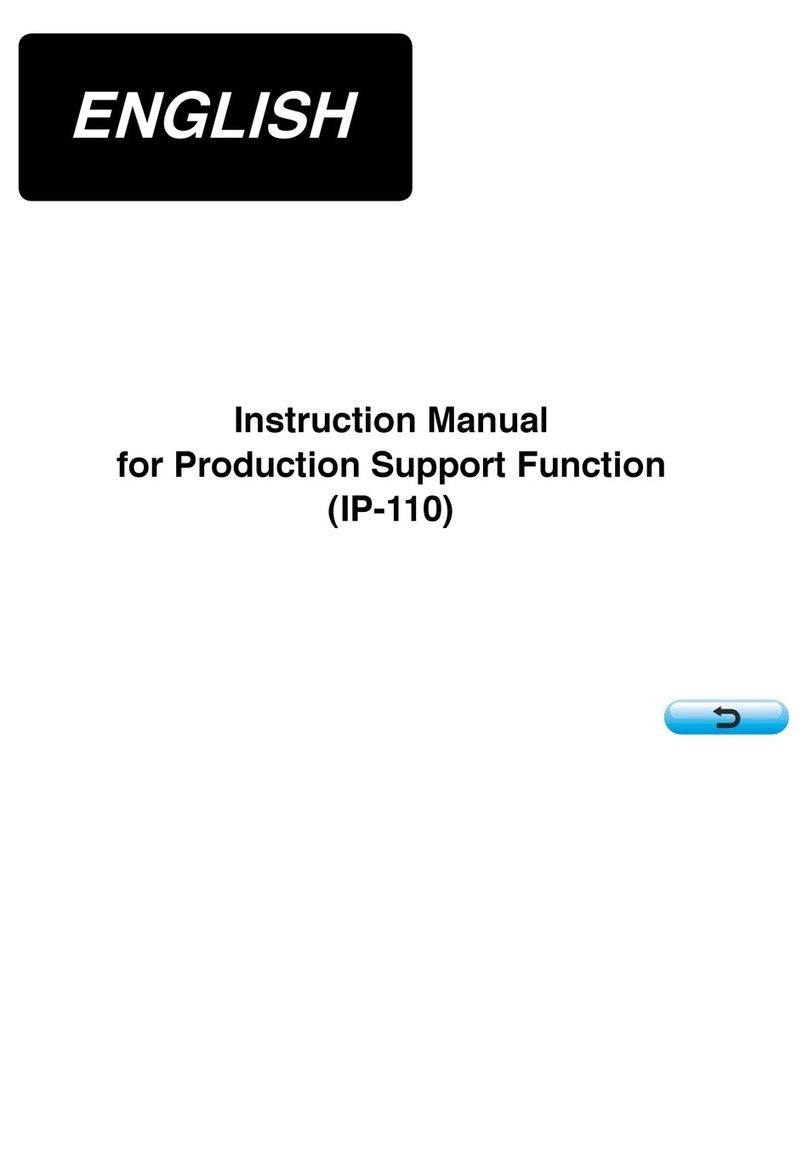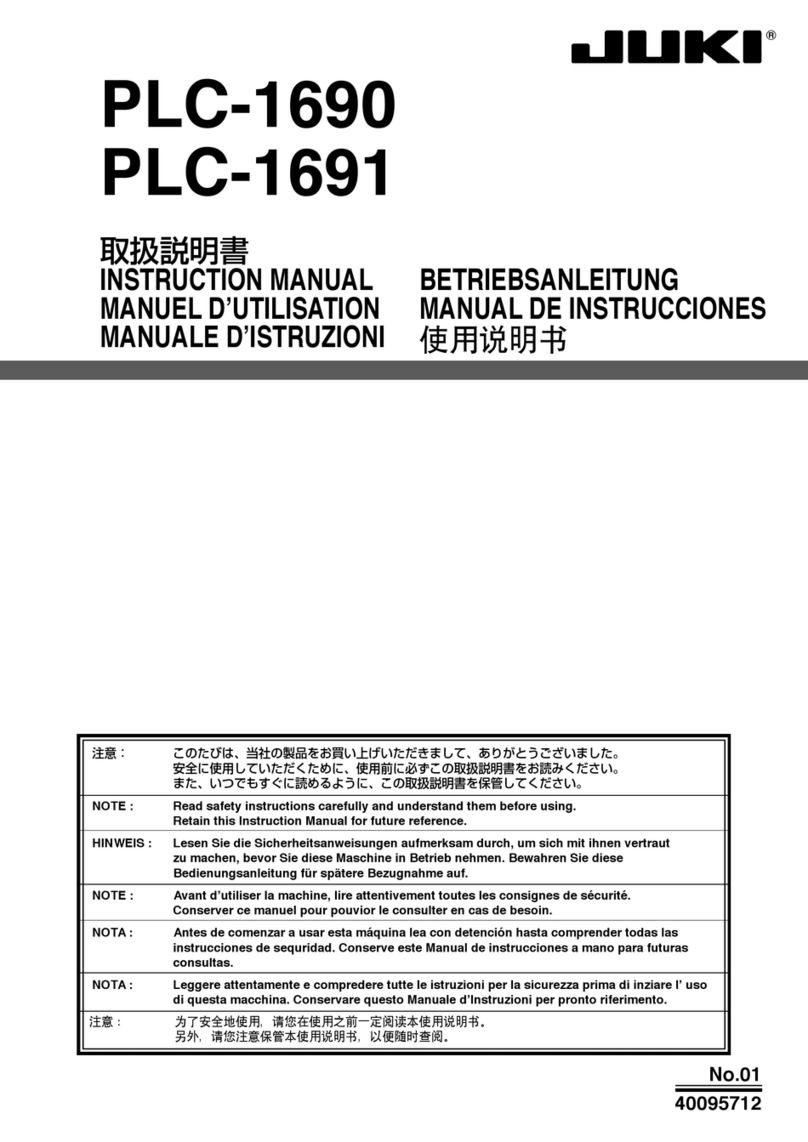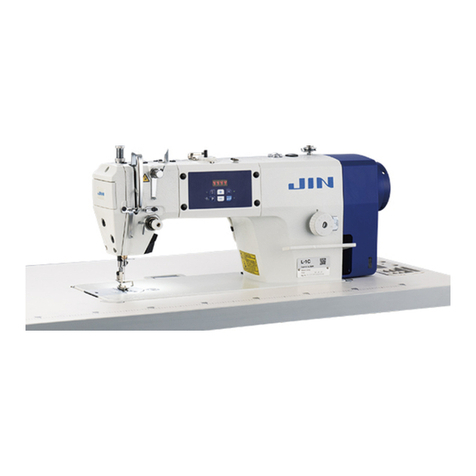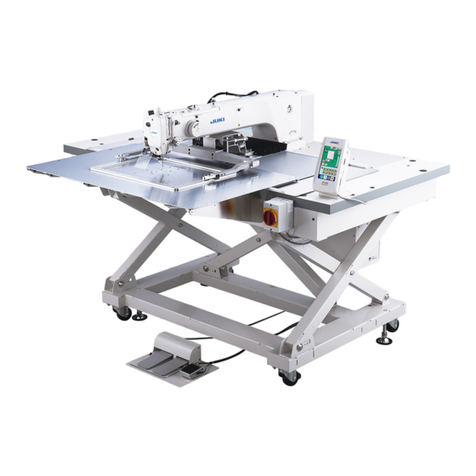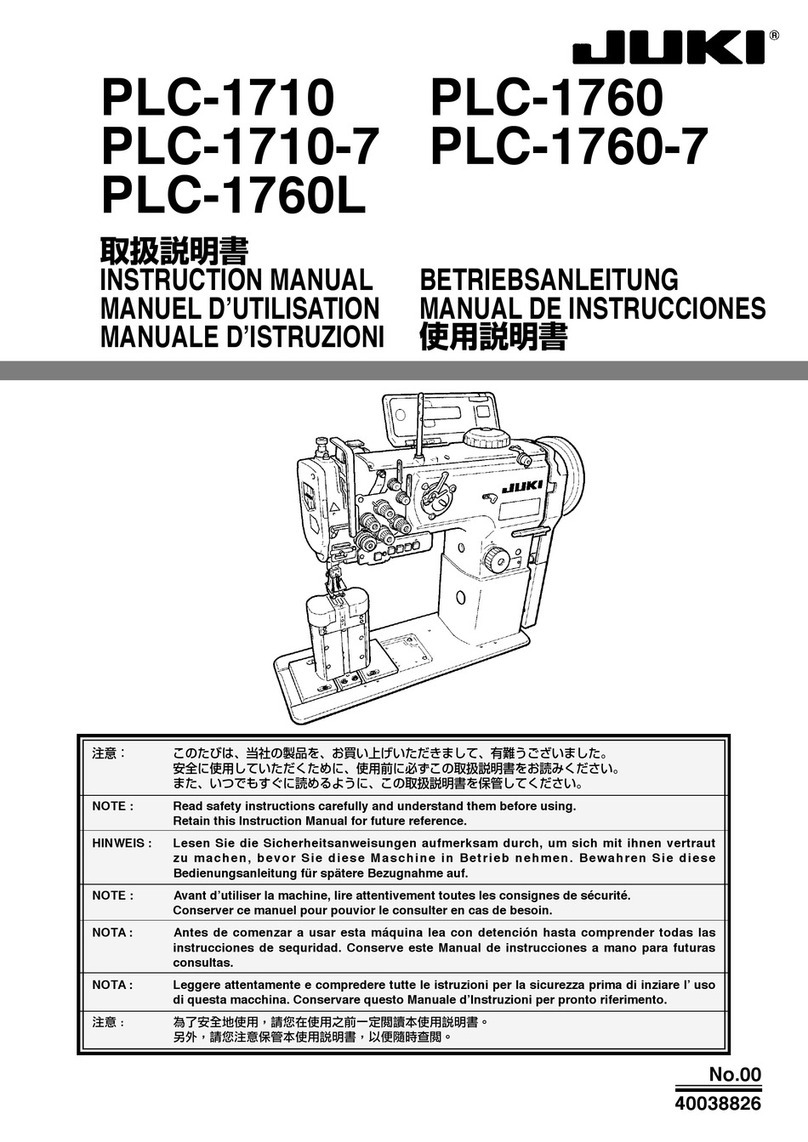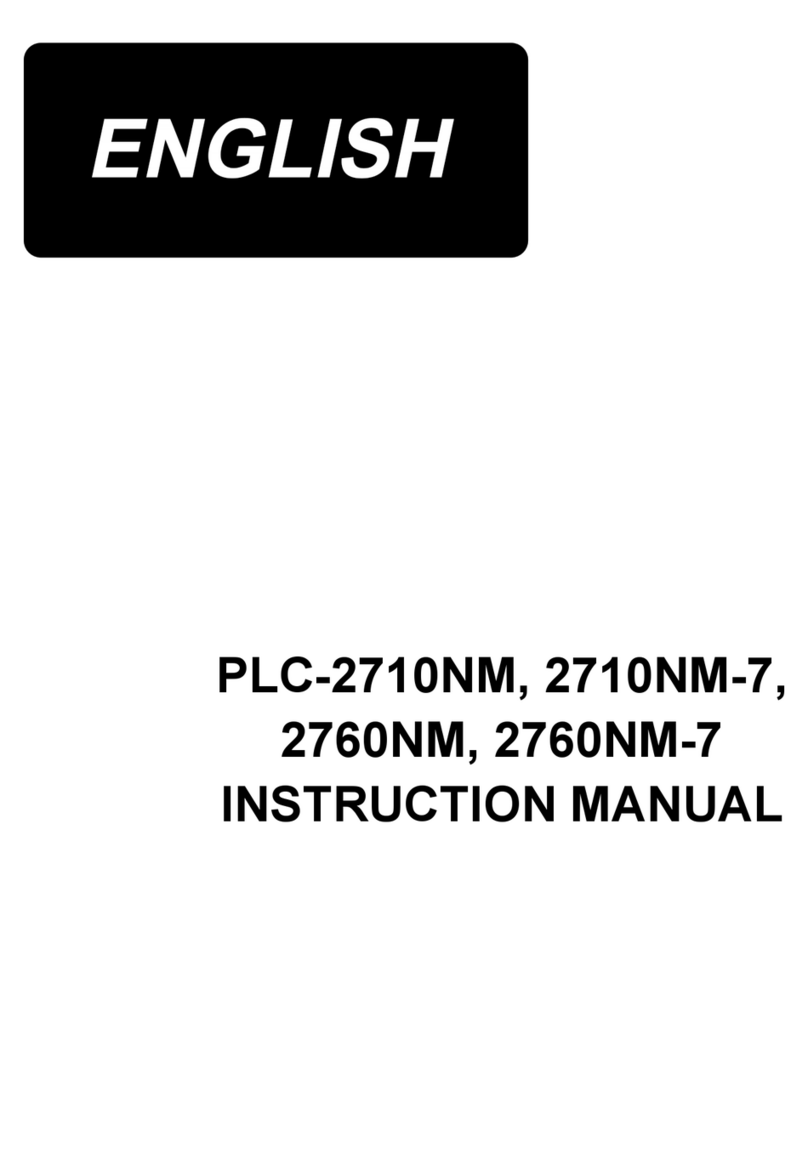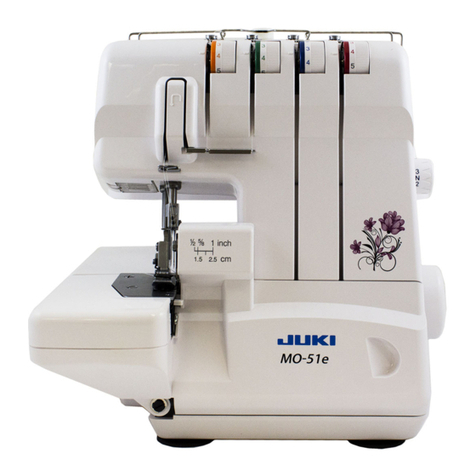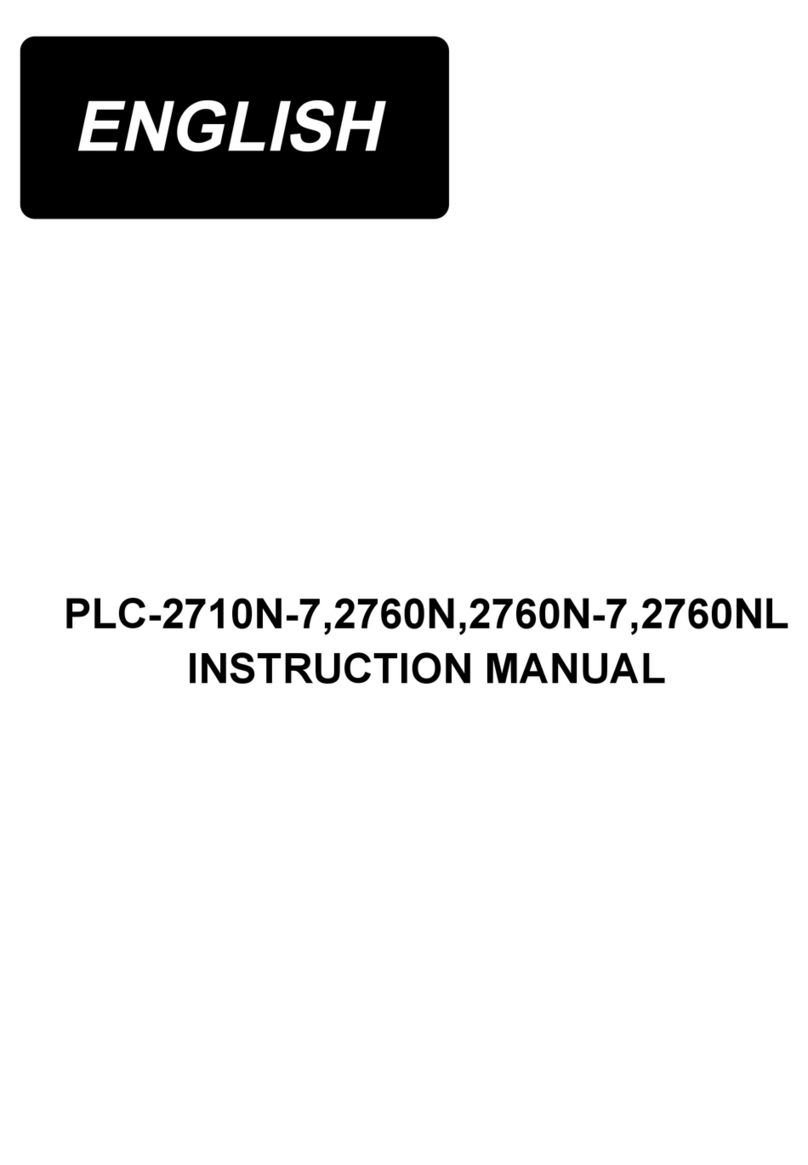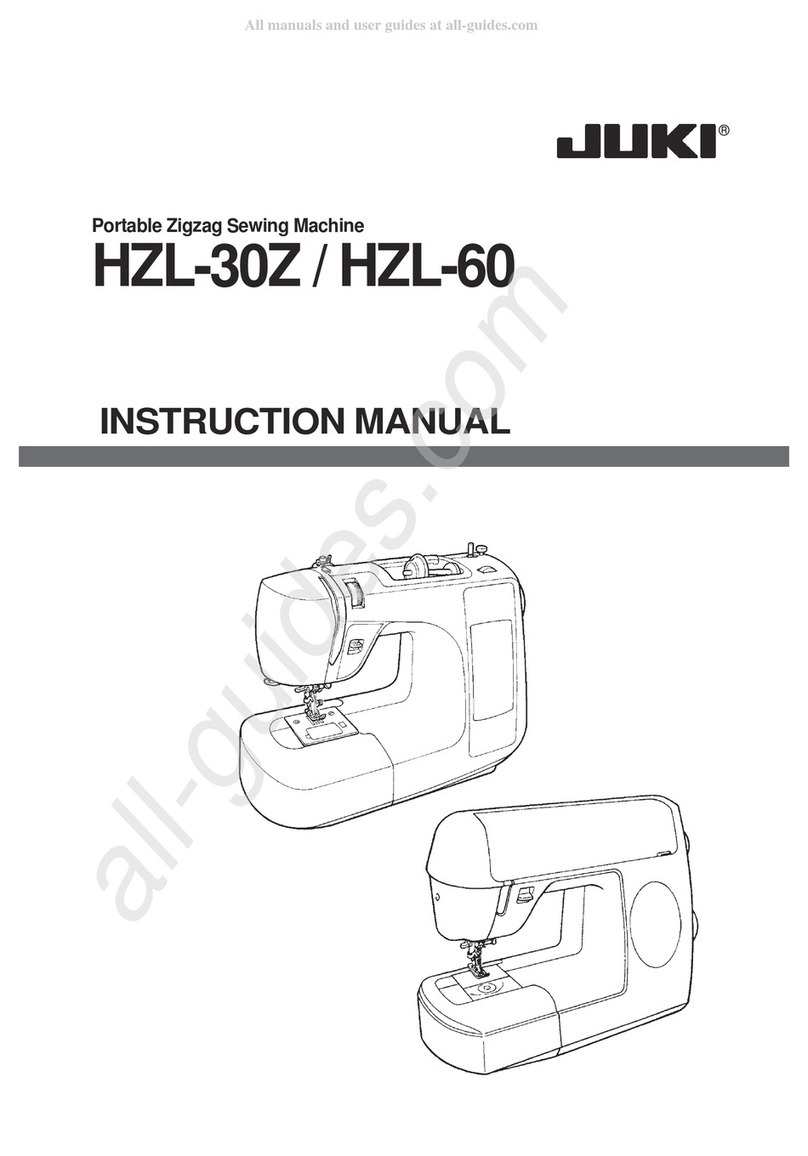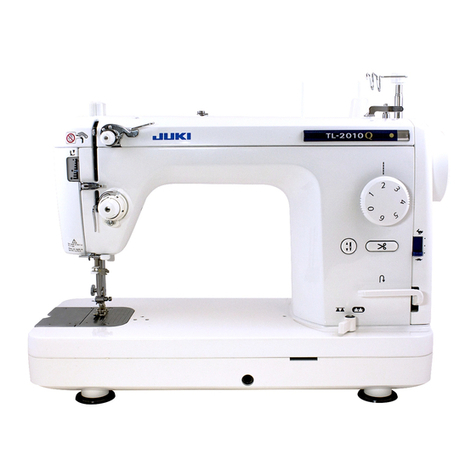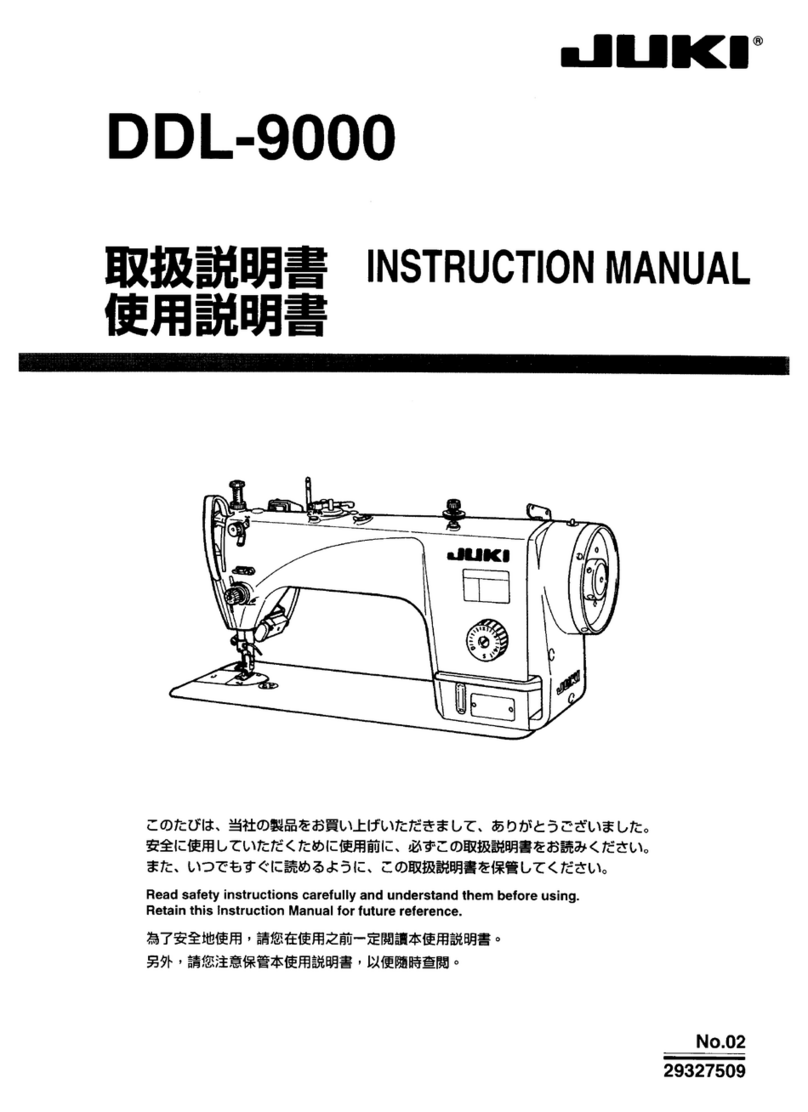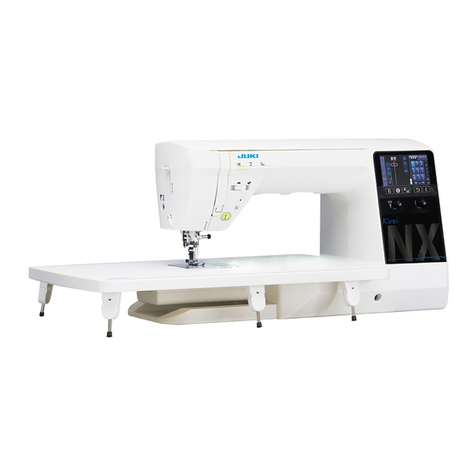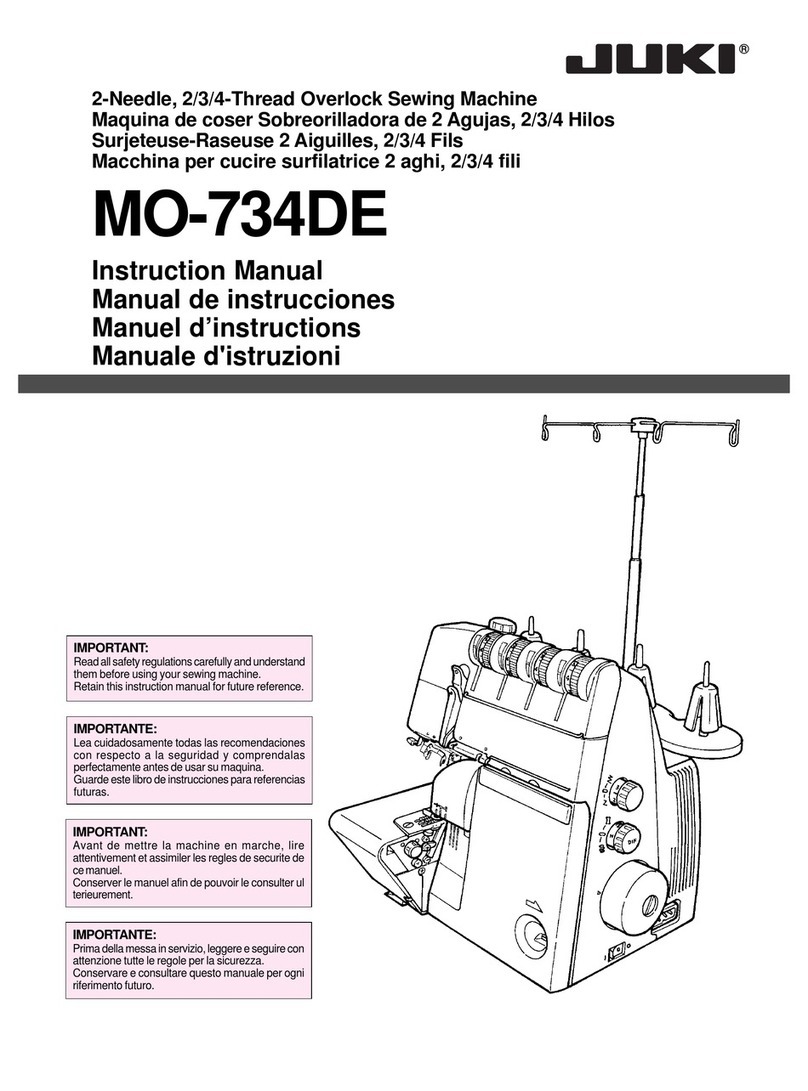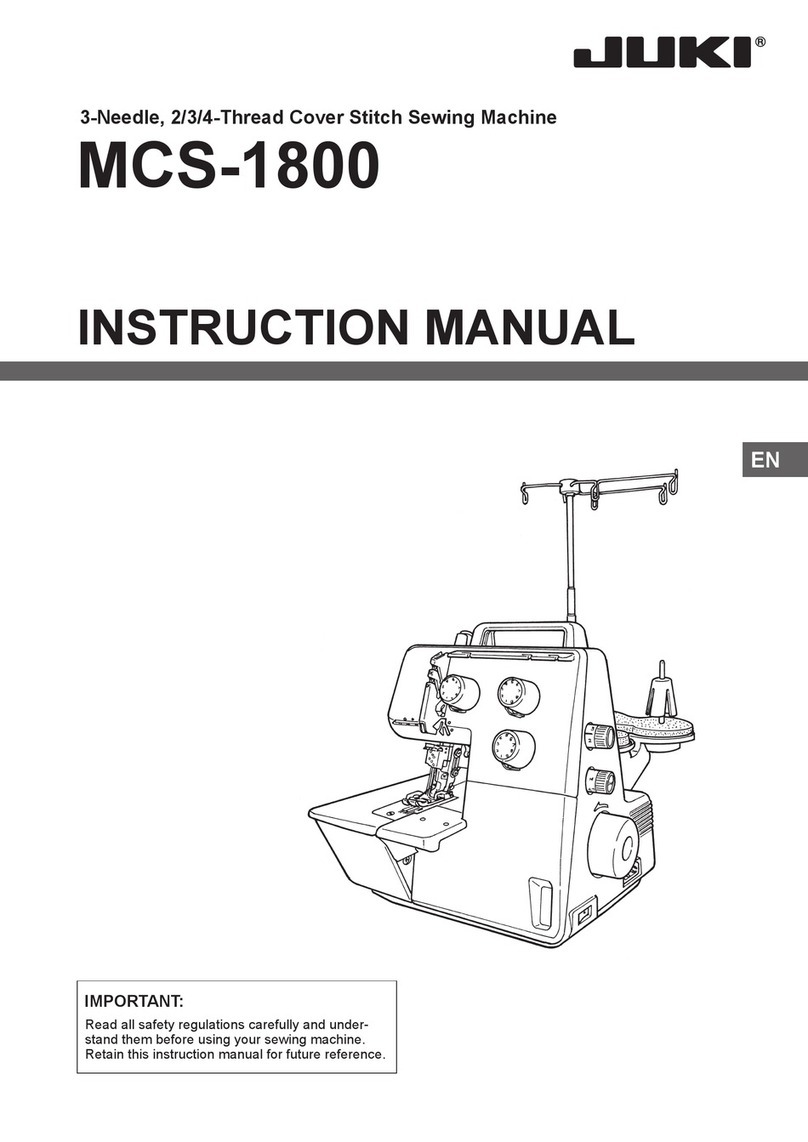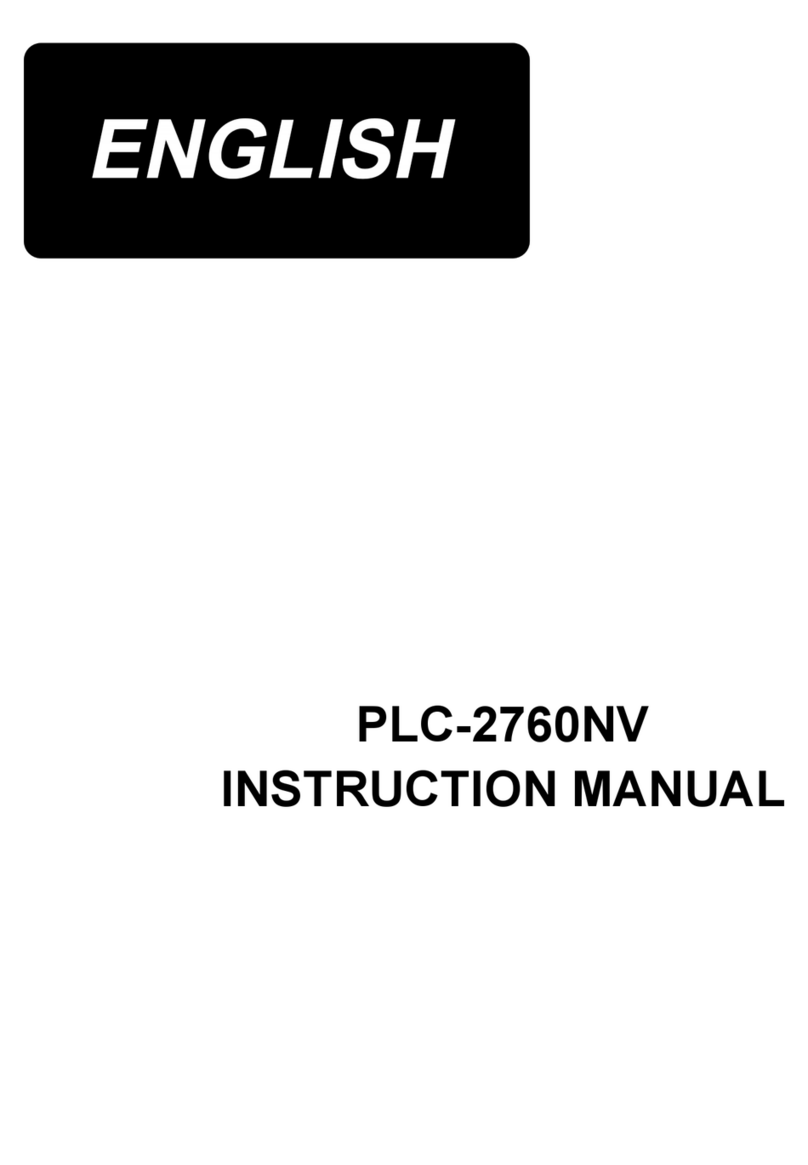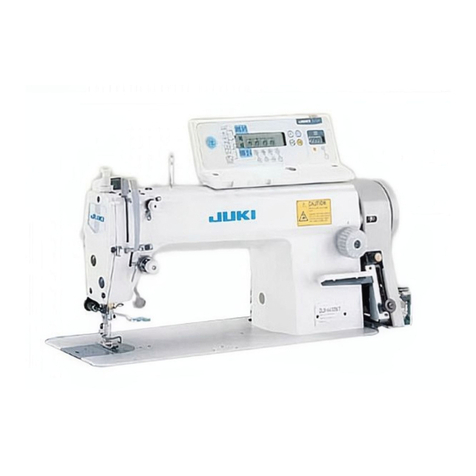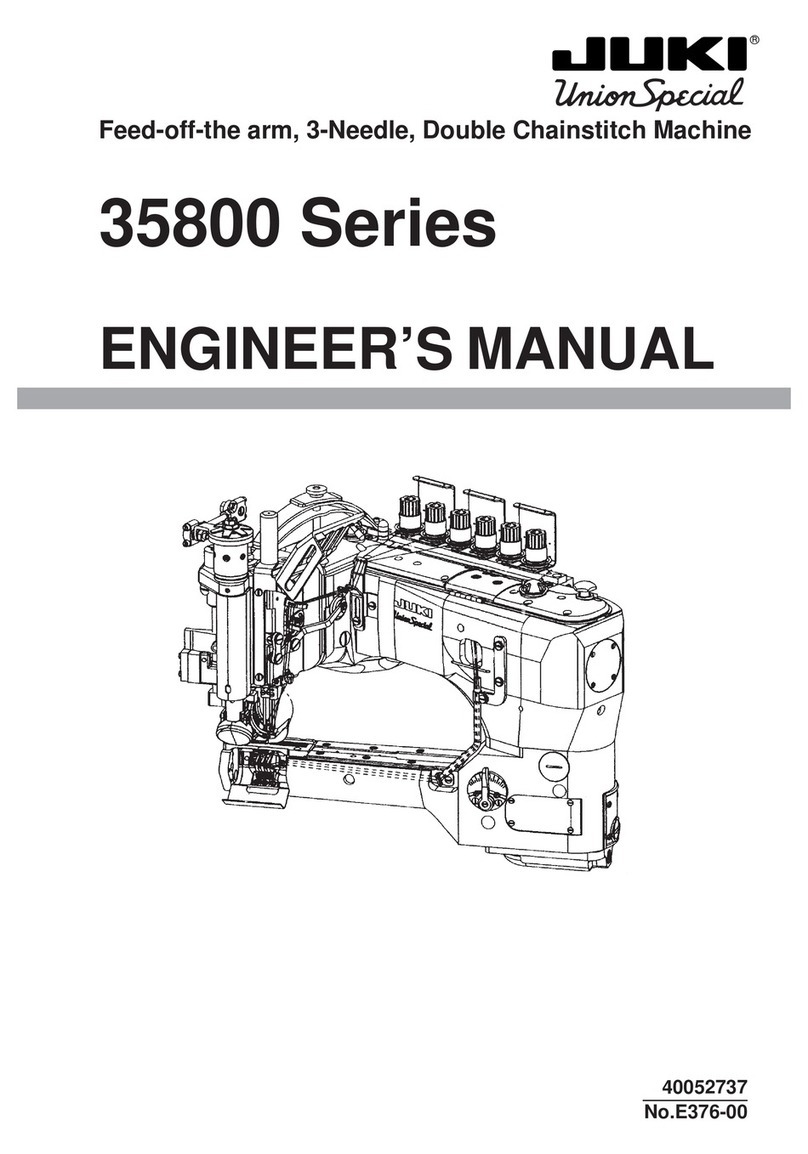Needle thread tension controlled by active-tension.
(electronic thread-tension-control system)
IMPROVEMENTS OF SEWING PERFORMANCE
• Needle thread tension for sewing parallel and bartacking sections of buttonholes
can be separately controlled through the operation panel and stored in memory
according to various sewing conditions (e.g., type of thread, type of material and
sewing speed).
• The machine is able to change the needle thread tensions at the parallel and
bartacking sections of the buttonhole, to produce a
beautiful buttonhole shape.
This capability helps greatly in preventingthread breakage.
• Needle thread tension is activated at the beginning and
end of sewing. This prevents unthreading of the needle
thread, and thread fraying that is likely to occur at the
beginning of sewing.
Reduction in
cycle time.
HIGHER PRODUCTIVITY
•The duration of low
speed sewing, before
the end of sewing, has
been shortend.
The machine is able to perform cycle sewing.
• Three different cycle sewing programs can be registered, each of which can store
up to 15 different patterns in memory.
• Data on needle thread tension, buttonholing length, stitching shape, etc., can be entered
to enable automatic changing according to a specific sewing condition.
<Example> Men's shirts : Change in the needle thread tension for sewing the first
button from the cuffs and change in button size for a button-down collar.
Ladies' wear : Change in buttonhole shape
Totalproductivity
is increased.
•The amount of time
required to change the
stitching shape and to
adjust the sewing size is
dramatically reduced at
the digital operation
panel.
Active tension
Feed mechanism using a stepping motor.
• The feed mechanism eliminates differences in stitch pitch between forward and
reverse feeds. This produces beautifully-shaped buttonhole.
• The feed mechanism achieves constant position stopping at the end of sewing.
• The feed mechanism allows the machine to sew exact square bartacks and exact
round tacks.
• The machine comes with an intermittent feed system to eliminate stitch skipping
or thread breakage due to needle swaying.
• The cloth cutting length (buttonhole length) can be easily changed at the operation panel.
Base line is controlled by a
stepping motor.
• The zigzag width can be changed without having to use a
tool.
• The optimum clearance between the knife and the parallel
section of a buttonhole can be easily adjusted to prevent
the knife from cutting
the seam.
Stepping motor for
controlling base line.
Stepping motor for
controlling zigzag width.
Tying stitches, soft start and speed
control.
•The machine is capable of sewing
tying stitches at the end of sewing to
prevent the thread from fraying.
•With its soft-start function, the
machine is able to establish the
number of stitches and sewing speed
at the beginning of sewing to prevent
unthreading of the needle thread.
The sewing speed can be
independently controlled for the
first through fifth stitch.
• With the speed control function, the
sewing speed can easily be changed
to a lower speed when sewing
difficult-to-sew material.
Slide speed
controller

